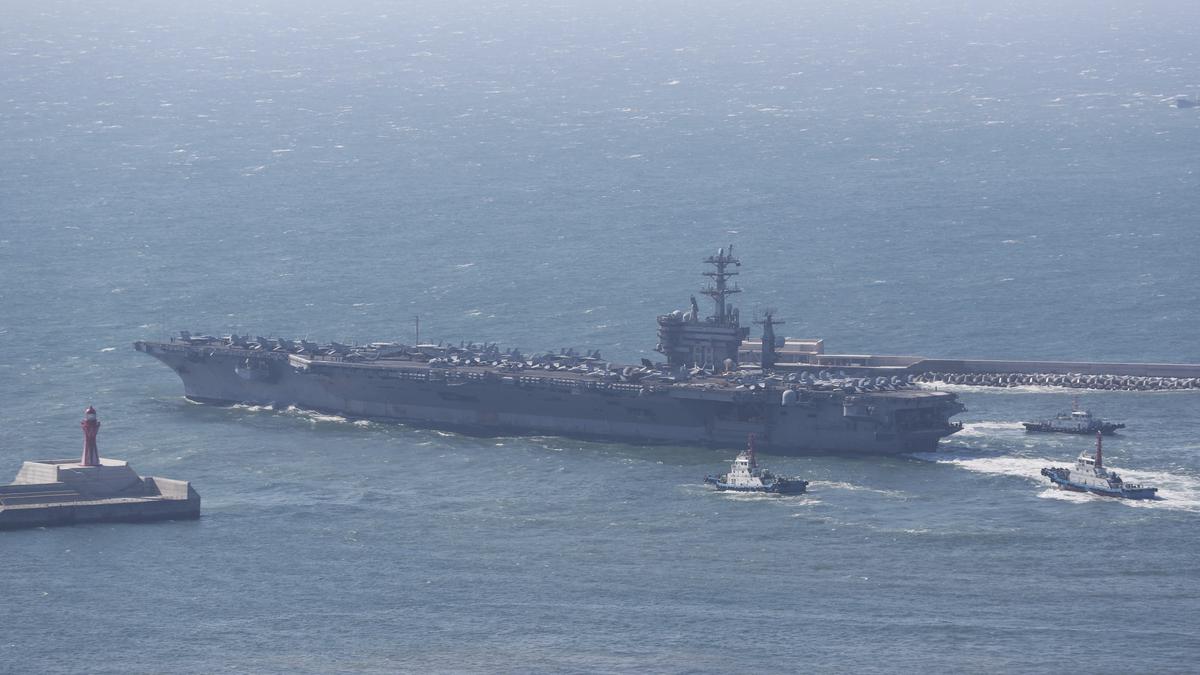
South Korea, U.S., Japan hold anti-North Korea submarine drill
The Hindu
The South Korean, U.S., and Japanese navies are conducting their first anti-submarine drills in six months to boost their coordination against increasing North Korean missile threats
The South Korean, U.S., and Japanese navies began their first anti-submarine drills in six months on April 3 to boost their coordination against increasing North Korean missile threats, South Korea’s military said.
The two-day drills come as North Korea’s recent unveiling of a type of battlefield nuclear warhead prompted worries the country may conduct first nuclear test since 2017.
The maritime exercises in international waters off South Korea’s southern island of Jeju involved the nuclear-powered USS Nimitz aircraft carrier and naval destroyers from South Korea, the U.S., and Japan, South Korea’s Defence Ministry said in a statement.
The training was arranged to improve the three countries’ capacities to respond to underwater security threats posed by North Korea’s advancing submarine-launched ballistic missiles and other assets, the statement said. It said the three countries were to detect and track unmanned South Korean and U.S. underwater vehicles posing as enemy submarines and other assets.
Submarine-launched missiles by North Korea are serious security threats to the United States and its allies because it’s harder to spot such launches in advance. In recent years, the North has been testing sophisticated underwater-launched ballistic missiles and pushing to build bigger submarines including a nuclear-powered one.
Last month, North Korea performed a barrage of missile tests in response to the earlier South Korea-U.S. bilateral military drills. The weapons tested included a nuclear-capable underwater drone and a submarine-launched cruise missile, which suggest North Korea is trying to diversify its kinds of underwater weapons.
Photographs in North Korea's state media last week showed about 10 capsule-shaped, red-tipped warheads called “Hwasan (volcano)-31” with different serial numbers. A poster on a nearby wall listed eight kinds of short-range weapons that can carry the “Hwasan-31” warhead. The previous test flights of those weapons show they are capable of striking key targets in South Korea, including U.S. military bases there.











